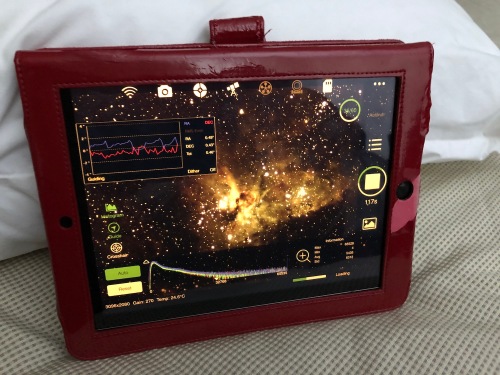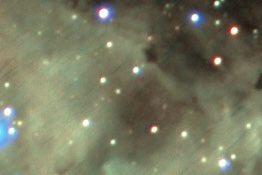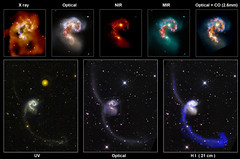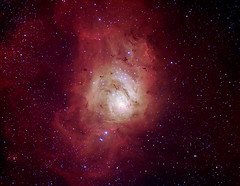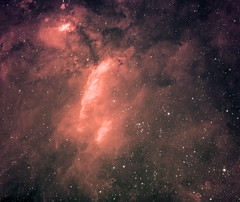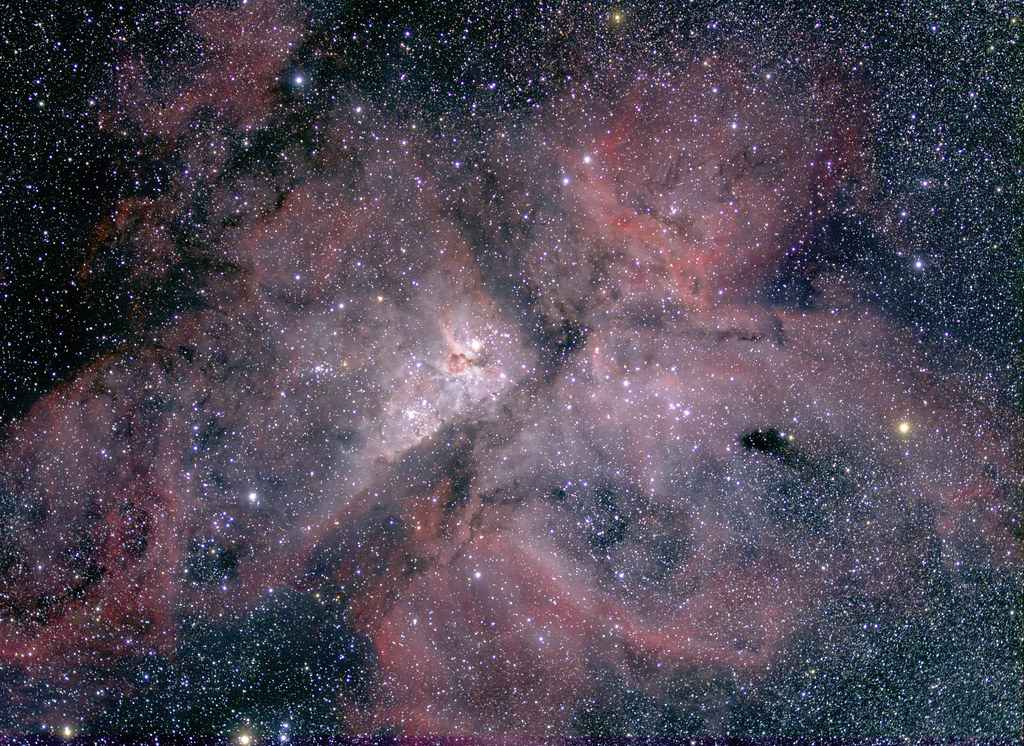
Image of the Carina Nebula using broad-band filters B (blue), G (green) and R (red), trying to achieve natural colours (i.e. the colours we would see with our eyes).
For avoiding saturating the brightest part of the nebula, only 10s exposures were taken, with a small “manual” (*) dithering pattern. 42 single frames were combined in each filter (7 minutes per filter).
The data were taken at around 3am, Saturday 13 March 2021, from Siding Spring Observatory (near Coonabarabran, NSW, Australia).
I used a ZWO ASI1600MM-Pro with the ZWO 2″ BGR filters, my new 7×2″ ZWO filter wheel, a Skywatcher Black Diamond 80mm with an Orion x0.8 focal reducer (effective focal length 480 mm, f/6). I used the ZWO ASIAir to control the camera, filter wheel, the mount (Skywatcher AZ-EQ6) and the guiding system (ASI120MM + Orion 50mm finderscope *).
The data have been processed with SIRIL, and then Photoshop for getting the colours. Darks were used but not flats were taken.
Credit: Ángel R. López-Sánchez (AAO-MQ).
Full resolution available in My Flickr.
(*) Well, actually I didn’t use guiding: the ZWO ASIAir didn’t want to talk to the mount, and I had to reset the mount a couple of times because, after doing the 3-stars alignment, the solution was completely wrong, once it pointed me to the ground to go to Canopus! After 3 hours fighting, very tired and cold, I decided to do something quick at least for saving the night. This was it. I had to do the dithering manually moving slightly the telescope with the keypad every 3-4 exposures. Dithering is VERY important for removing extra noise / artefacts of the camera.
PS: The astrometry of the image can be found in this link. Well, actually I uploaded the previous version I quickly created, that had too much magenta. But I wanted to check a curious object in the image, V* FU Car, a carbon star with magnitudes V = 11.2 and G= 12.4 en G, meaning V-G = -1.2 mag!





